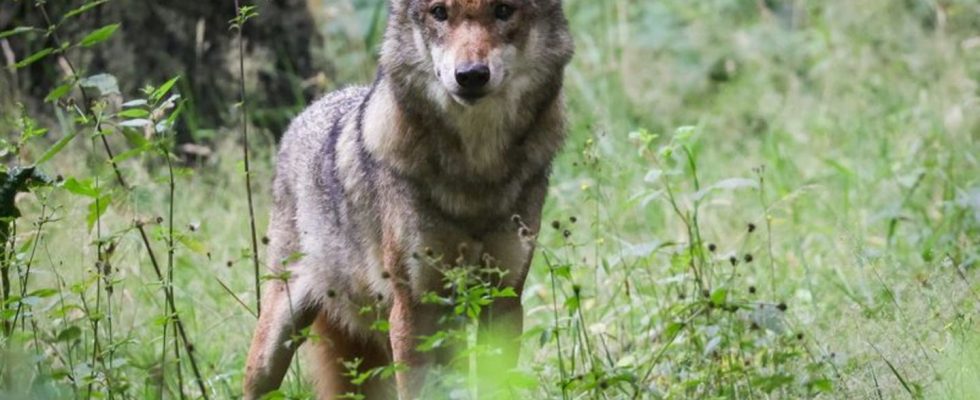agricultural economics
Lemke and Özdemir want to make it easier to shoot down wolves
In Germany, the federal states are responsible for wolf management. So far, wolves have enjoyed a high protection status. photo
© Christian Charisius/dpa
As wolves prey on livestock with increasing frequency, calls for more kills and easier kills are growing louder. But that might get complicated.
However, the implementation is complicated: In Germany, the federal states are responsible for wolf management. To date, wolves have enjoyed a high level of protection under both federal and EU law. In some regions, however, there are doubts as to whether the protection status is still justified due to larger populations.
Özdemir advocates an easier launch
Federal Agriculture Minister Cem Özdemir also wants to make it easier to kill wolves in order to better protect grazing animals, for example. “In the future, it must be easier to remove individual wolves and whole packs that overcome herd protection measures and kill animals,” said the Green politician of the German Press Agency.
So far, such launches have unfortunately failed due to inconsistent interpretations of the legal requirements. That should be turned off, clarity is needed, according to Özdemir. He supports Environment Minister Steffi Lemke (Greens) in an initiative to work with the federal states for a simplified application of the applicable rules.
“I want sheep, goats and cattle to be able to continue to stand as safely as possible on our pastures,” said the Minister of Agriculture. Wolves are causing increasing problems for animal keepers in some regions. “We cannot leave the farmers alone with this, they deserve our solidarity and our support,” said Özdemir.
At the end of July, EU Commission President Ursula von der Leyen (CDU) was basically open to lowering the strict protection status of the wolf. “It’s true that the endangered species must be protected. But if the species is no longer endangered in certain regions, we have to deal with the wolf differently and hunt it, for example,” she said. It is true that the protection of wolves is regulated under international law and this is based on the figures presented on the development of the wolf population. However, the reality of life of the local people must also be taken into account.
About 1200 proven wolves in Germany
Especially in Lower Saxony, Brandenburg, Mecklenburg-West Pomerania and Saxony, the wolf, which was wiped out in Germany in the middle of the 19th century, has spread again since its return around the turn of the millennium. It happens again and again that wolves also kill farm animals such as sheep, goats and calves. With reference to the wolf monitoring 2021/2022, the Federal Agency for Nature Conservation puts the number of wolves detected in Germany at around 1200. The animals lived accordingly in 161 herds. There were also 43 pairs of wolves and 21 sedentary solitary wolves. Previous wolf shootings, such as in March in Brandenburg, have been sharply criticized by many animal welfare and environmental organizations.
According to the federal documentation and advice center on wolves (DBBW), an average of 3.8 animals were killed per wolf attack in 2022. Of the farm animals killed or injured by wolves in Germany in 2022, 88.6 percent were sheep and goats, 4.2 percent were wild game and 6 percent were cattle (mostly calves). The number of injured or killed farm animals was less than 500 in 2014; according to the DBBW, it will be over 4,000 in 2022.

